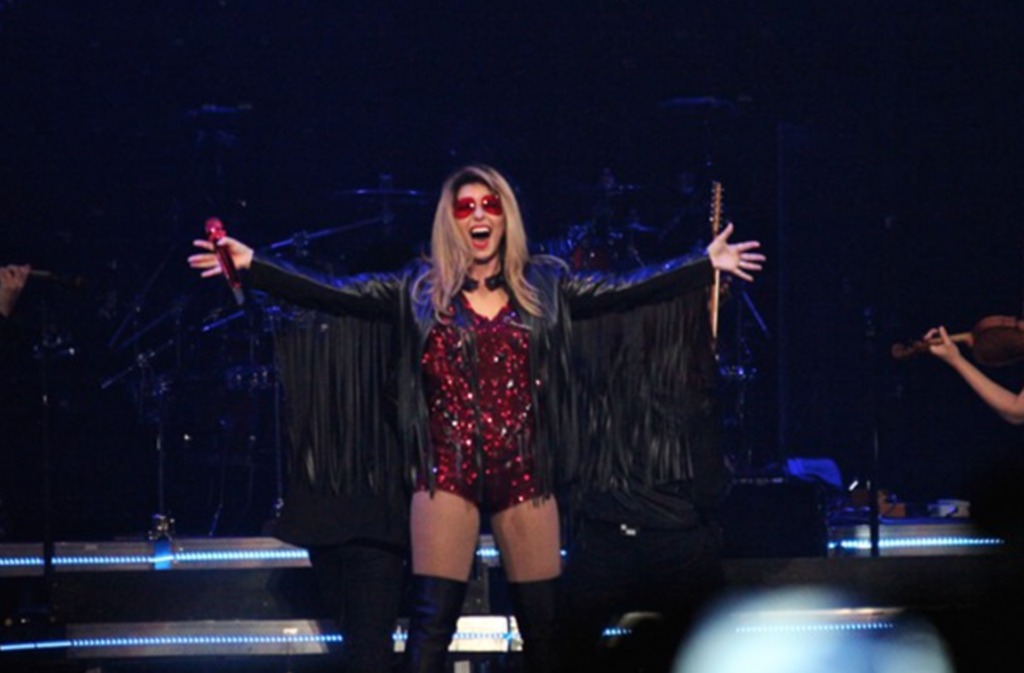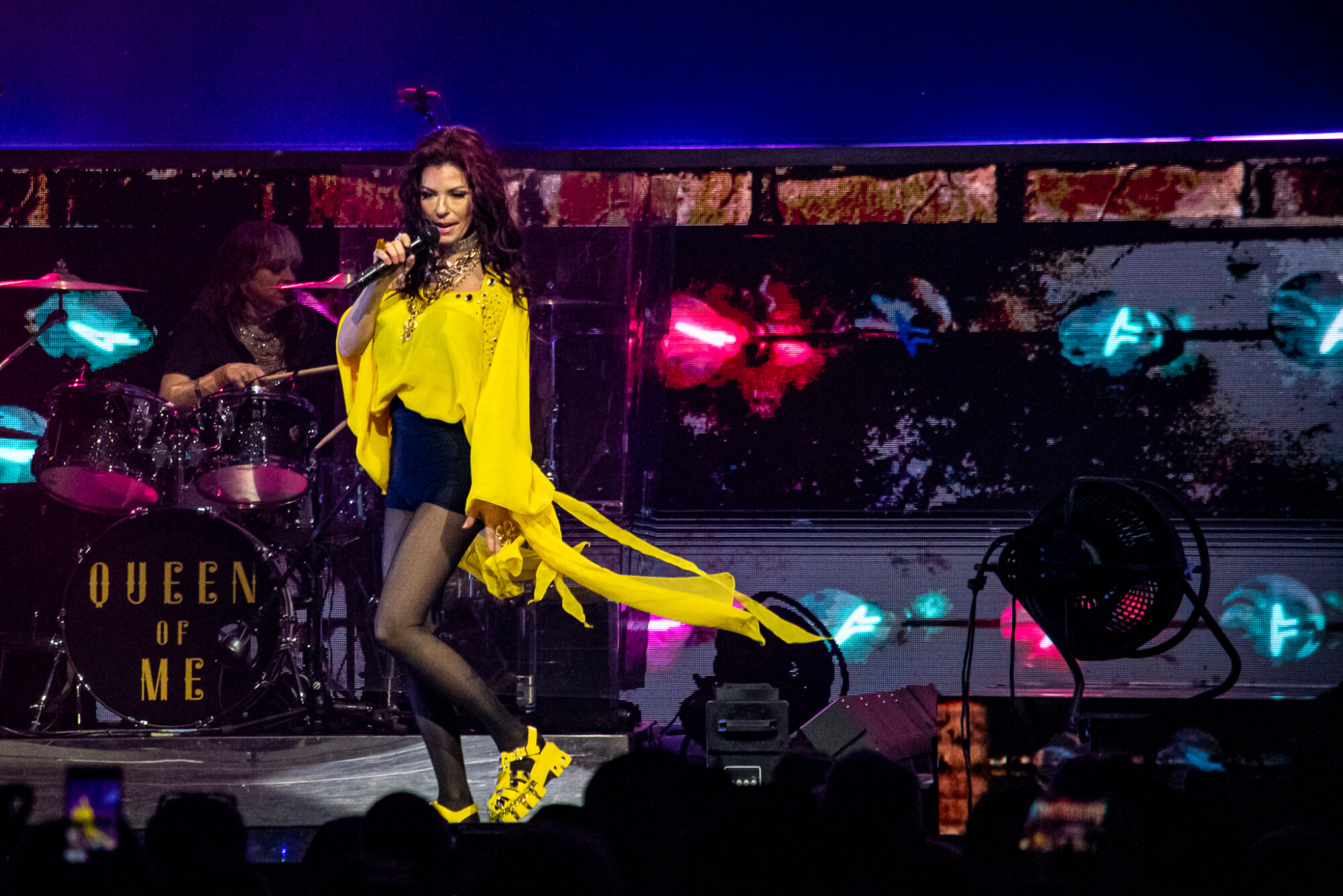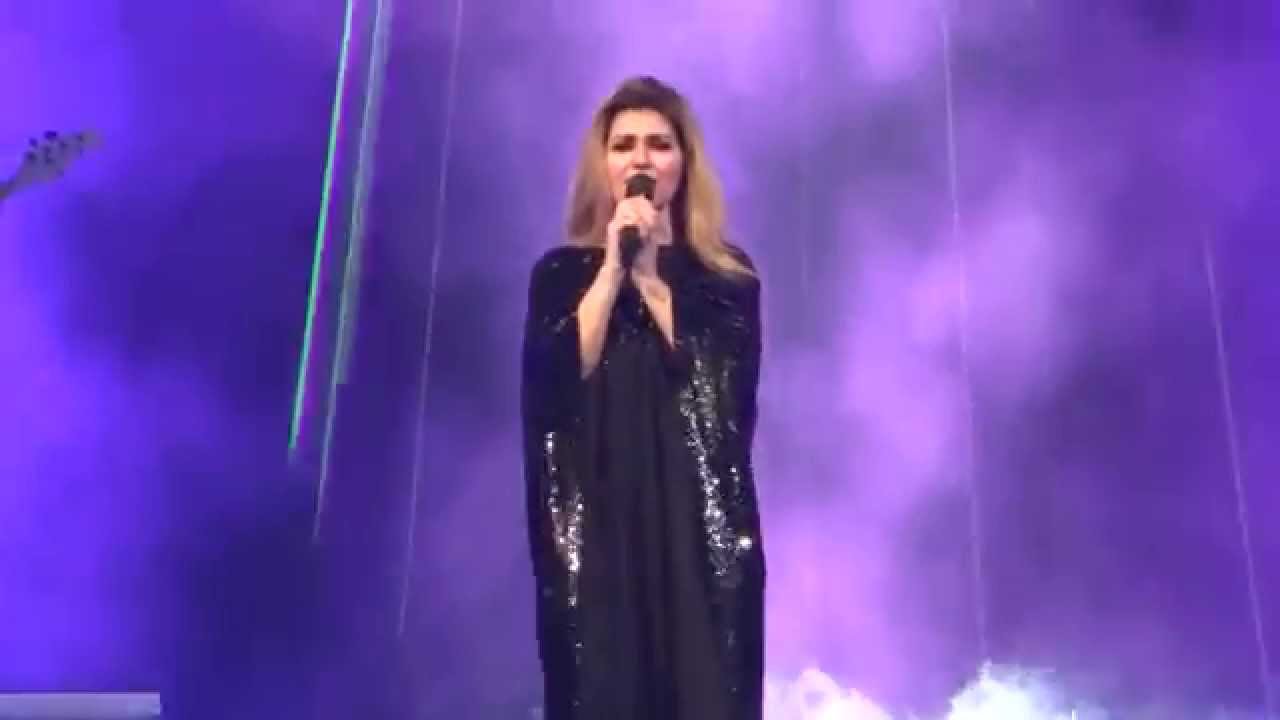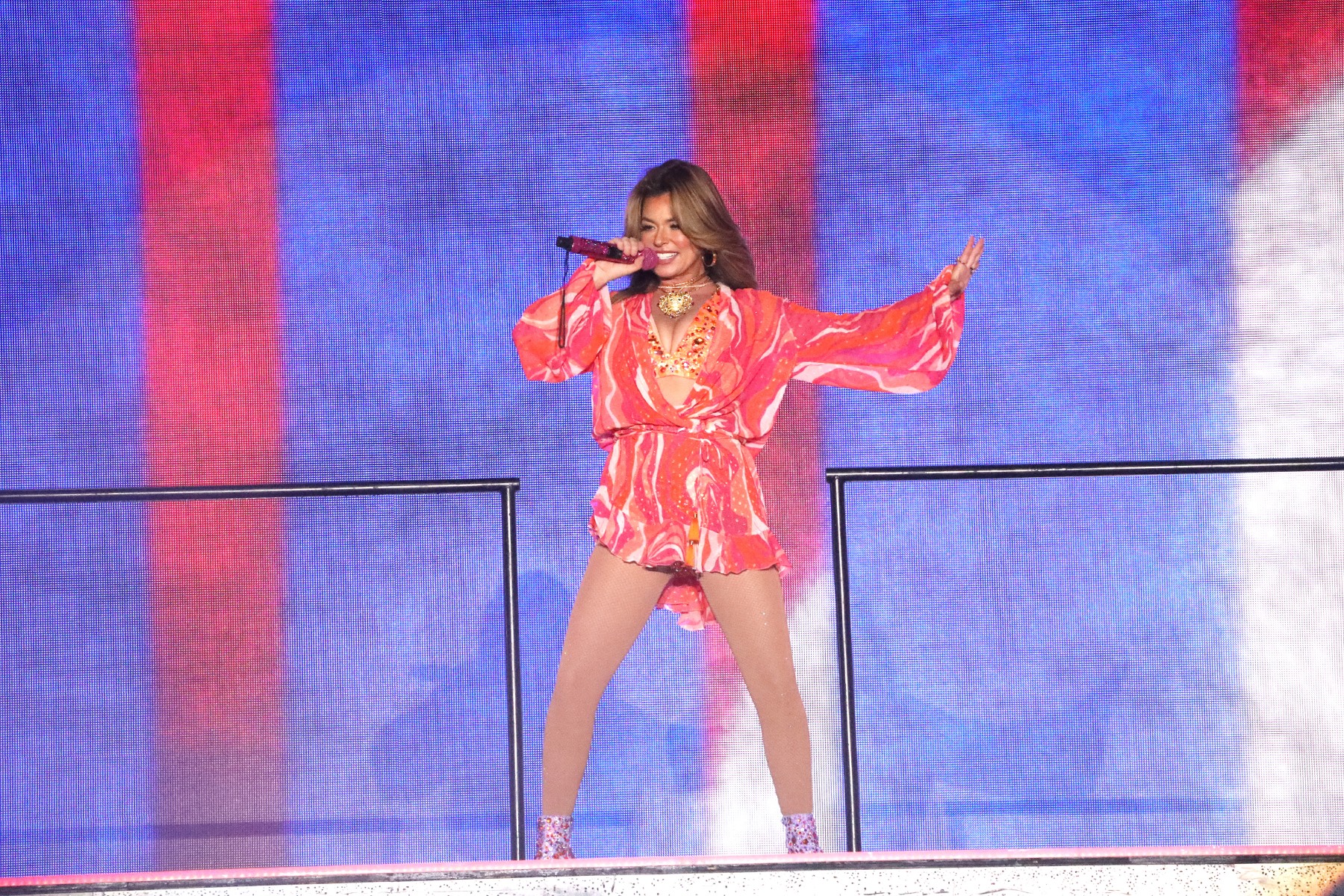Shania Twain Kansas City
Shania Twain (shania twain kansas city), the iconic country-pop artist, recently brought her electrifying energy to Kansas City for a night of unforgettable music.
Author:Mia ThompsonReviewer:Calvin PenwellNov 15, 202314.3K Shares476.6K Views

Country music boasts a passionate and dedicated fan base, often staying within the confines of the genre. However, there are rare performers like Shania Twain who possess mainstream crossover appeal, captivating not only country enthusiasts but also rock and pop aficionados. Shania Twain (shania twain kansas city), the iconic country-pop artist, recently brought her electrifying energy to Kansas City for a night of unforgettable music. This concert, held at a packed T-Mobile Center, was a testament to Twain's immense talent and enduring status as one of the most beloved performers in the industry. With chart-topping hits and an incredible stage presence, the event was a true celebration of Shania Twain's remarkable career.
Shania Twain - A Country-Pop Trailblazer
Shania Twain has had an illustrious career that spans decades. Born Eilleen Regina Edwards in Windsor, Ontario, Canada, on August 28, 1965, she adopted the stage name Shania, which means "I'm on my way" in Ojibwa. Her journey to stardom was not without its challenges. She overcame a challenging childhood marked by poverty and personal tragedy to become one of the most successful female artists in the history of country music.
Twain's rise to fame was meteoric, with her breakthrough album, "The Woman in Me," released in 1995. The album featured hits like "Any Man of Mine" and "Whose Bed Have Your Boots Been Under?" that catapulted her to international stardom. Shania's success continued with subsequent albums like "Come On Over," which became the best-selling country album of all time and included iconic tracks like "Man! I Feel Like a Woman!" and "You're Still the One." Her distinctive blend of country twang and pop sensibility resonated with audiences across genres, making her a true pioneer in country-pop music.
The Anticipation Builds
As fans eagerly gathered outside the T-Mobile Center, the air was charged with anticipation and excitement. The atmosphere was electric as concertgoers, spanning from die-hard fans dressed in Shania-inspired outfits to casual listeners seeking a night of musical enjoyment, shared their love for the artist. Cowboy boots and hats were as prevalent as sandals, and the glitzy attire that adorned the crowd added a touch of glamour to the occasion.
Mickey Guyton - A Stellar Opener
The night kicked off with a sensational performance by Mickey Guyton. Guyton, known for her soulful voice and powerful lyrics, warmed up the crowd with her incredible talent. Her presence on stage was infectious, and her genuine affection for the audience was evident. In Kansas City, you can always go right mentioning the Super Bowl champions, and Guyton's nod to the local pride resonated with the crowd.
Shania Twain - The Queen Of Country-Pop Takes The Stage
After a brief intermission, the moment everyone had been waiting for arrived – Shania Twain's entrance. Instead of a dramatic cloud of smoke or a flashy stage setup, Twain's unmistakable voice echoed through the arena. The giant screens revealed her location, right among the crowd. She was carried on a platform through the front section, serenading her fans up close and personal. Those lucky enough to have ringside seats could even high-five their favorite singer.
A Journey Through Hits
Throughout the concert, Shania Twain took the audience on a captivating journey through her extensive catalog of hits. From her early breakthrough songs like "Any Man of Mine" to her more recent chart-toppers such as "Life's About to Get Good," Twain showcased her versatility as an artist and her ability to connect with her fans through her music. Each song was met with thunderous applause and enthusiastic sing-alongs, creating an unforgettable night for all in attendance.
The Iconic Encore
One of the standout moments of the night came when Twain performed her iconic hit, "Man! I Feel Like a Woman!" as her encore. The crowd erupted in cheers, and the energy in the venue was palpable. Twain's infectious enthusiasm and irresistible stage presence had everyone on their feet, dancing and singing along. It was a fitting conclusion to a night filled with memorable performances.
Shania Twain's Lasting Impact
Shania Twain's influence on the music industry extends beyond her chart-topping hits and incredible stage presence. She has shattered gender stereotypes in country music, paving the way for female artists to thrive in a traditionally male-dominated genre. Her ability to seamlessly blend country and pop has inspired countless artists to experiment with their musical styles, broadening the horizons of country music itself.
Where Is Shania Twain Kansas City Playing?
When Shania Twain graces the stage in Kansas City, fans can anticipate an electrifying performance at some of the city's premier venues. The Queen of Country Pop has been known to captivate audiences at several iconic locations, including Sprint Center, Arrowhead Stadium, and Starlight Theatre.
Sprint Center, with its capacity to accommodate 19,252 enthusiastic fans, provides an intimate yet exhilarating setting for Shania's melodies to echo through the hearts of her audience. If you're looking for a grander experience, Arrowhead Stadium, with its massive seating capacity of 79,451, offers a colossal atmosphere where Shania's music can resonate with a sea of devoted followers. On the other hand, Starlight Theatre, with its cozy seating for 7,947, provides a more intimate and charming backdrop for an unforgettable evening with the country music sensation.
For those eager to catch Shania Twain live in Kansas City or explore other exciting concerts in the area, you can find tickets and stay up-to-date on upcoming events at these fantastic venues by browsing our Kansas City concert tickets. Take the chance to witness the magic of Shania Twain's performance in the heart of Kansas City.
Kansas City Mustic Style
The Kansas City jazz scene of the 1930s is a legendary chapter in the history of American music. It was a melting pot of talent and innovation that left an indelible mark on the jazz genre. While not all the musicians associated with Kansas City were born there, the city served as a vibrant hub for jazz during this period. Let's delve into the Kansas City style and the remarkable musicians who contributed to its unique sound.
The Pioneers Of Kansas City Jazz
Kansas City-style jazz was defined by a roster of remarkable musicians, including:
- Pianists - Pete Johnson and Mary Lou Williams
- Singer - Big Joe Turner
- Trumpeter - Oran "Hot Lips" Page
- Saxophonists: Buster Smith, Ben Webster, and Lester Young
- Bassist-Bandleader - Walter Page
- Saxophonist-Bandleader - Andy Kirk
- Pianist-Bandleaders - Bennie Moten, Jay McShann, and Count Basie
These artists, though not necessarily native to Kansas City, converged in the city during the 1930s, creating a vibrant musical scene that would go on to influence the course of jazz history.
Characteristics Of The Kansas City Style
The Kansas City style was characterized by its loose and relaxed rhythmic feeling, setting it apart from the more structured styles found in Chicago and New York City during the same era. The arrangements in Kansas City jazz were refreshingly simple, often featuring syncopated, repeating phrases known as "riffs." These riffs were played antiphonally, with one section of the band (e.g., saxes) responding to another (e.g., brass). This approach created a dynamic interplay of musical voices within the ensemble.
Another distinctive feature was the saxophonists' preference for a drier tone with slower vibrato compared to their East Coast counterparts. This contributed to the unique timbre and character of Kansas City jazz.
Count Basie And The National Spotlight
Kansas City jazz gained national recognition when Count Basie, a jazz icon in his own right, formed a band from the remnants of Walter Page's Blue Devils and the Bennie Moten band. This ensemble embodied the Kansas City sound, with Lester Young as its star soloist. The relaxed groove and improvisational prowess of this group left an indelible mark on the jazz landscape.
The Influence Of Buster Smith And Charlie Parker
Under the tutelage of Buster Smith, a highly respected saxophonist and teacher, another jazz legend emerged—Charlie Parker. Parker honed his skills while soloing with the Jay McShann band, a prominent fixture in the Kansas City jazz scene. Eventually, Charlie Parker would help usher in the modern jazz style known as bebop, forever altering the course of jazz history.
The Evolution Of Kansas City Jazz
While Kansas City jazz is often associated with the big band swing era led by figures like Andy Kirk, Jay McShann, and Count Basie, its development paralleled that of New York City and Chicago. It began with New Orleans-style combos, evolved to larger ensembles with written and elaborate arrangements, and culminated in the instrumentation of the swing era big bands.
The fertile entertainment scene of 1930s Kansas City was influenced by various political and economic factors, making it a breeding ground for musical innovation. Scholars and historians have explored this phenomenon in works such as Ross Russell's "Jazz Style in Kansas City and the Southwest" (1971) and Leroy Ostransky's "Jazz City" (1978), providing insight into the cultural and historical context of this vibrant period in jazz history.
In summary, the Kansas City style of jazz, born in the 1930s, left an enduring legacy in American music. Its relaxed rhythms, syncopated riffs, and legendary musicians like Count Basie, Lester Young, and Charlie Parker continue to inspire and influence jazz enthusiasts and musicians worldwide.
The Many Faces Of Kansas City’s Music Scene
Kansas City has a musical heritage deeply intertwined with the jazz genre. From the early 20th century to the present day, the city's devotion to jazz remains vibrant, with over 40 jazz and fine-dining venues showcasing this iconic musical style every night of the week. Here's a comprehensive look at the world of jazz in KC:
Back In The Day - The Birth Of Jazz In KC
Though not native to Kansas City, jazz found its home here, particularly in the 1920s and 1930s. The heart of the jazz scene was along 12th and 18th streets in Downtown KC, which served as a vital hub for the city's African-American community and where many legendary musicians launched their careers.
As jazz flourished, Kansas City's reputation as a "wide open" town during Prohibition attracted numerous musicians to its nightclubs, dance halls, and vaudeville houses, all of which regularly featured jazz performances. Among the luminaries who graced these venues were Ella Fitzgerald, Louis Armstrong, Count Basie, Mary Lou Williams, Duke Ellington, and many more. This influx of talent and devoted fans helped create what is now known as the 18th & Vine Historic Jazz District.
At its zenith, jazz echoed from more than 200 venues across the city, including iconic spots like The Gem Theater, The Blue Room, and the Mutual Musicians Foundation.
Kansas City Jazz Today - A Living Legacy
Kansas City's rich jazz history continues to thrive, leaving an indelible mark on music enthusiasts worldwide. The city pays homage to its jazz heritage through institutions like the Kansas City Jazz Ambassadors, the American Jazz Museum, and an abundance of jazz-inspired artwork throughout the urban landscape.
The American Jazz Museum, housed in the former Gem Theater on 18th & Vine, celebrates the careers and legacies of KC's jazz legends while promoting jazz as a quintessential American art form through research, exhibitions, education, and live performances.
Adjacent to the museum stands the Charlie Parker Memorial, a stunning sculpture honoring one of the city's legendary jazz sons.
Famous Clubs And Venues - Where Jazz Comes To Life
- Mutual Musicians Foundation - This historic venue, also home to the Black Musicians Union Local 627, hosted late-night jam sessions where musicians exchanged ideas and experimented with their instruments. Today, it is listed on the National Register of Historic Places and remains the longest-running jazz venue globally.
- The Blue Room - Linked to the American Jazz Museum, The Blue Room is as essential to KC's jazz scene now as it was in the 1920s and 1930s, making it a must-visit attraction.
- Green Lady Lounge - Known for its lively atmosphere and no-cover-ever policy, the Green Lady Lounge has become a modern favorite for jazz lovers in KC.
- The Phoenix - Located in Downtown KC, The Phoenix offers a taste of local jazz flavor. Arrive early to secure your spot in this bustling joint.
- The Majestic Restaurant - Housed in a historic building dating back to 1911, The Majestic Restaurant was once a Prohibition-era speakeasy. Today, the lower-level club combines a classic Kansas City steakhouse experience with top-notch jazz performances.
- Corvino Supper Club & Tasting Room - While not exclusively a jazz club, Corvino Supper Club often features popular jazz acts alongside its delectable cuisine, making it a hotspot for music and dining enthusiasts.
- The Ship - Every Thursday, The Ship hosts jazz night, offering a more relaxed ambiance perfect for enjoying classic cocktails and bebop rhythms.
Jazz Slang Dictionary
Before stepping into one of the 100+ live music venues throughout the city, brush up on your jazz slang:
- Cats - The musicians gracing the stage and jamming through the night.
- Chops - The natural ability to play an instrument or hit the high notes with ease.
- In the Pocket - When a group is rhythmically in sync.
- Jam Session - A free-flowing, improvised group performance—invented in KC.
- Wail - Playing a song exceptionally well, as in, "Man, that Charlie Parker can really wail."
Whether you're a jazz enthusiast or simply looking to explore live music in Kansas City, there's always a captivating performance to be found in this city with a rich and enduring jazz legacy.
Shania Twain Kansas City - FAQs
How Much Are Shania Twain's Kansas City Tickets?
Tickets for Shania Twain shows in Kansas City start at $74.00, and the average price is around $130.00. However, it's important to note that ticket prices can vary based on several factors, including the date of the show, seat selection, tour guests, and other considerations.
How Can I Get Cheap Shania Twain Kansas City Tickets?
If you're looking to score affordable Shania Twain tickets for her Kansas City concerts, here are some tips:
- Consider attending a weekday show, as tickets tend to be more budget-friendly on non-weekend dates.
- Check if there are other Shania Twain shows in nearby cities or venues, as ticket prices may sometimes vary between locations.
- Be vigilant and monitor ticket prices regularly, as deals and discounts may become available over time, allowing you to secure a more cost-effective option.
Is Shania Twain Retiring From Her Music Career?
No, Shania Twain is not retiring from her music career. While she did announce that her current tour would be her last tour before releasing her fifth studio album, she confirmed in an interview on Global Television Network's The Morning Show on March 6 that she has no plans to retire from her music career.
What Are Shania Twain's Future Plans In Music?
Shania Twain has plans to release her fifth studio album while she is 50, as announced. Although this is her last tour, fans can look forward to new music from her in the future, as she intends to continue her music career beyond the tour.
Conclusion
Shania Twain's concert in Kansas City, known as Shania Twain Kansas City, was a testament to her enduring popularity and the timeless appeal of her music. She not only showcased her remarkable talent but also her genuine connection with her fans. It was a night that celebrated the career of a true country-pop legend, leaving everyone in attendance with cherished memories that will last a lifetime.
Shania Twain's ability to bridge the gap between country and pop continues to make her an icon in the music industry, and her performance in Kansas City was nothing short of spectacular. Her legacy as a trailblazer in country music remains as strong as ever, ensuring that her music will continue to inspire generations to come.
Jump to
Shania Twain - A Country-Pop Trailblazer
Shania Twain - The Queen Of Country-Pop Takes The Stage
Shania Twain's Lasting Impact
Where Is Shania Twain Kansas City Playing?
Kansas City Mustic Style
The Many Faces Of Kansas City’s Music Scene
Famous Clubs And Venues - Where Jazz Comes To Life
Jazz Slang Dictionary
Shania Twain Kansas City - FAQs
Conclusion

Mia Thompson
Author
Mia Thompson is a versatile writer at Kansas Press, delving into a range of topics including news, spiritual exploration, astrology, and numerology. With a passion for delivering insightful and informative content, Mia's articles provide readers with valuable perspectives and thought-provoking insights into these intriguing subjects.
She is dedicated to creating content that resonates with readers and fosters a deeper understanding of complex topics.

Calvin Penwell
Reviewer
Since diving into numerology in 1997, my path has been marked by extraordinary encounters and insights. A pivotal moment was uncovering a forgotten numerological manuscript in a tucked-away Italian library, which deepened my connection to the ancient wisdom of numbers. Another transformative experience was a meditation retreat in Nepal's tranquil mountains, where I honed my intuition and the art of interpreting numerical vibrations.
These adventures have not only enriched my numerological practice but also my ability to guide others towards understanding their destiny and life's purpose. My approach is deeply personal, rooted in a blend of historical knowledge and intuitive insight, aimed at helping individuals find their alignment with the universe's abundant energies. My mission is simple: to share the power of numerology in illuminating paths to abundance and fulfillment.
Latest Articles
Popular Articles



